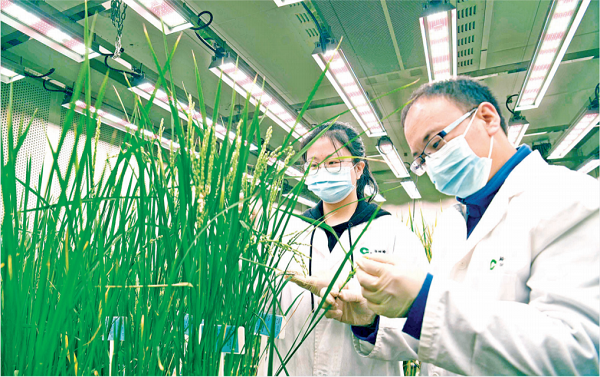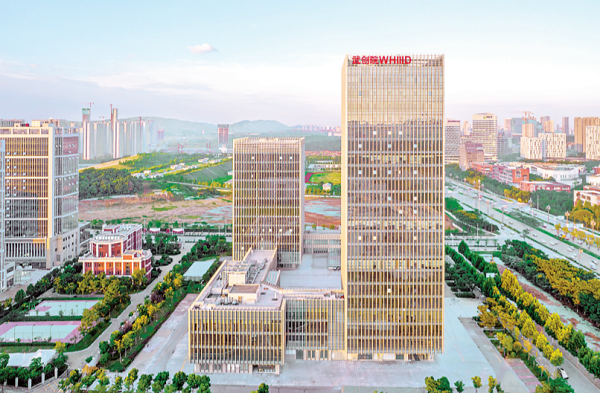OVC sees surge in innovation after start of new year

Rice grows in the lab of the Life Science and Technology Center of the China National Seed Group Co. [Photo/WeChat account of Optics Valley of China]
Since the start of the new year, scientific platforms and research institutes, as well as sci-tech firms and universities based around the East Lake High-tech Development Zone (also known as Optics Valley of China, or OVC), have been stepping up efforts to tackle bottlenecks and accelerate technology transfers.
In the lab of the Life Science and Technology Center of the China National Seed Group Co, green rice is growing well. During the week-long Spring Festival, researchers continued to observe the rice every day, with the first batch of seeds now having sprouted.
On Jan 28, the first workday after the festival, the semiconductor thermoelectric chip pilot-scale experiment platform was put into full operation.
The project, led by Zhang Qingjie, an academician from the Chinese Academy of Sciences and professor at the Wuhan University of Technology, and funded by the Wuhan and OVC governments, is expected to enter the market in half a year and will consume 30 percent less energy than the international standard.

An aerial photo of WHIIID [Photo/WeChat account of Optics Valley of China]
The Wuhan Institute of Industrial Innovation and Development (WHIIID), also founded in OVC, is currently constructing more office areas for the new group of corporate innovation centers.
Since last April, WHIIID has been revamping efforts to improve its industrial innovation mechanism, and seven professional research institutes, 10 corporate innovation centers, and four industrial public service platforms have been approved for construction.
A number of leading scientific research teams and core talent teams have been brought into WHIIID, with about 20 technologies commercialized successfully.


